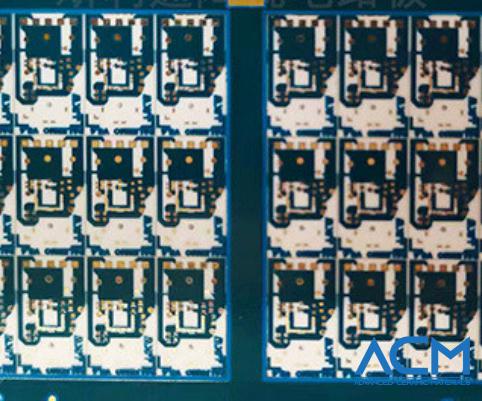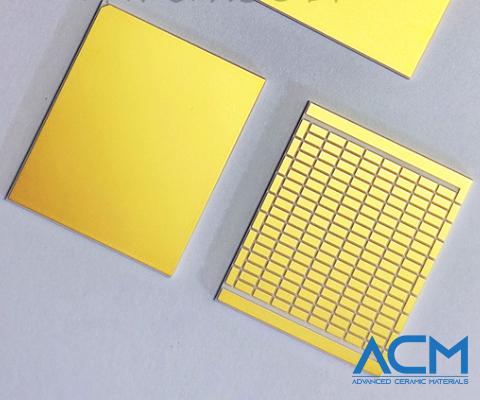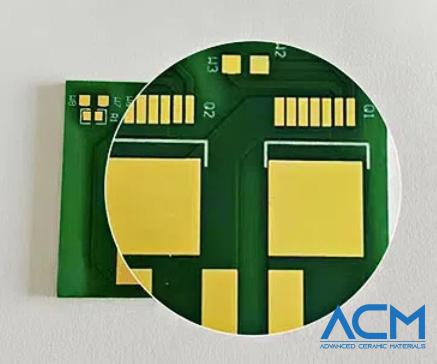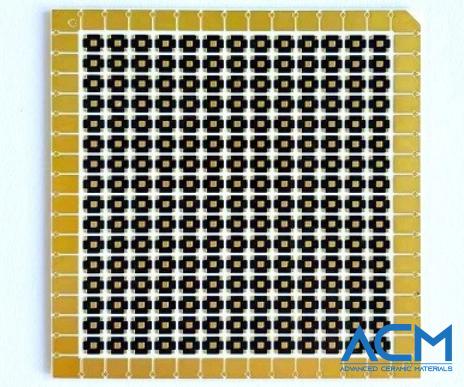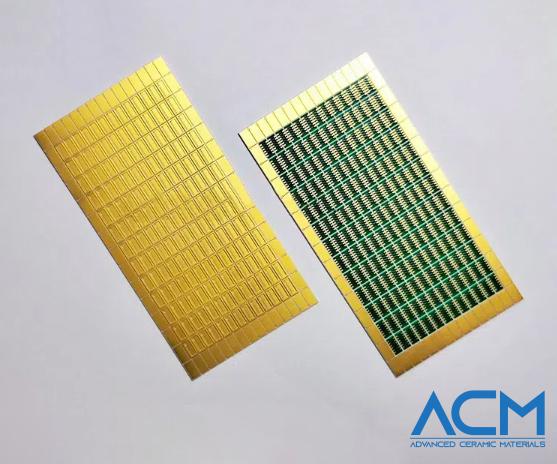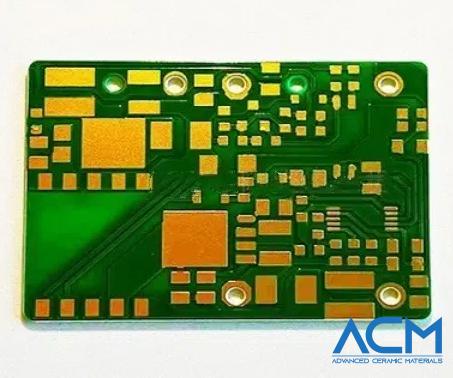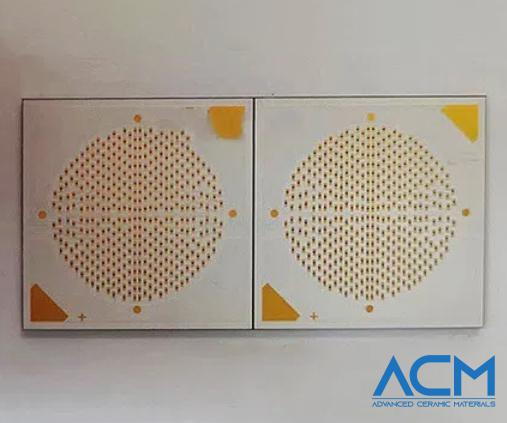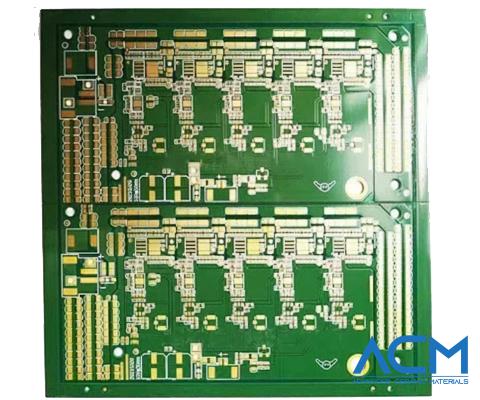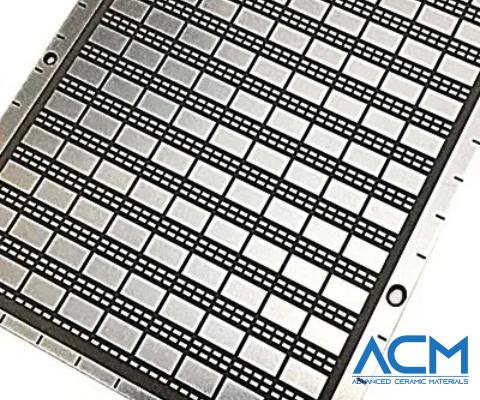MC6503 Nickel-Palladium-Gold-Silver Plated Alumina Ceramic Circuit Board
- Catalog No. MC6503
- Material Nickel, Gold, Palladium, Silver, Alumina
- Appearance Silvery Plate
- Thickness 1.0 mm
Inquiry
MC6503 Nickel-Palladium-Gold-Silver Plated Alumina Ceramic Circuit Board
Description
The Nickel-Palladium-Gold-Silver Plated Alumina Ceramic Circuit Board is engineered from 96% high-purity alumina, offering outstanding thermal conductivity and excellent electrical insulation. Its multi-layer plating process incorporates nickel, palladium, gold, and silver, which collectively enhance corrosion resistance, solderability, wire bonding capabilities, and oxidation resistance. These enhancements make the circuit board ideal for high-frequency and high-reliability systems where both performance and durability are paramount. Whether used in power electronics, semiconductor devices, or RF circuits, this ceramic circuit board delivers consistent and dependable performance in even the most challenging environments.
Specifications
| Parameter | Details |
|---|---|
| Materials | Nickel, Palladium, Gold, Silver, Alumina |
| Color/Appearance | Silvery Plate |
| Thickness | 1.0 mm |
| Number of Layers | Double-sided |
| Substrate Type | 96% Alumina |
| Size | 70 × 80 mm |
| Copper Plate Thickness | 0.035 mm |
| Copper Thickness in Hole | 0.035 mm |
| Line Width and Spacing | Minimum Hole Diameter |
| Surface Treatment | Immersion Nickel-Palladium + Immersion Silver |
Applications
The Nickel-Palladium-Gold-Silver Plated Alumina Ceramic Circuit Board is versatile and essential in various high-performance applications, including:
-
Power Electronics
- Uses: Power modules, converters, and inverters
- Benefits: Superior thermal management and electrical insulation ensure efficient and stable operation.
-
Semiconductor Devices
- Uses: Chip carriers, integrated circuits, and high-performance semiconductors
- Benefits: Enhanced corrosion resistance and solderability support reliable semiconductor performance.
-
RF Circuits
- Uses: Radio frequency modules, antennas, and communication devices
- Benefits: Maintains signal integrity and stability in high-frequency environments.
-
Telecommunications
- Uses: Base stations, signal processing units, and networking equipment
- Benefits: Ensures consistent performance and durability in high-demand communication systems.
-
Automotive Electronics
- Uses: Advanced Driver Assistance Systems (ADAS), electric vehicle components, and automotive power systems
- Benefits: Robust thermal and electrical properties cater to the demanding automotive environment.
-
Aerospace
- Uses: Avionics, satellite systems, and defense electronics
- Benefits: Reliable performance and durability under extreme conditions.
-
Industrial Applications
- Uses: High-power industrial controllers, automation systems, and machinery
- Benefits: Ensures efficient thermal management and long-term reliability in industrial settings.
Packaging
Our Nickel-Palladium-Gold-Silver Plated Alumina Ceramic Circuit Boards are meticulously packaged to maintain their integrity during storage and transportation. Each circuit board is securely packed to prevent any damage, ensuring that it arrives at your location in pristine condition.
Frequently Asked Questions (FAQ)
Q1: What is a Nickel-Palladium-Gold-Silver Plated Alumina Ceramic Circuit Board?
A1: It is a high-performance ceramic circuit board made from 96% high-purity alumina, featuring a multi-layer plating of nickel, palladium, gold, and silver. This combination provides excellent thermal conductivity, superior electrical insulation, and enhanced corrosion resistance, making it suitable for demanding electronic applications.
Q2: What are the advantages of using this circuit board?
A2:
- Superior Thermal Conductivity: Efficient heat dissipation ensures optimal performance in high-power applications.
- Excellent Electrical Insulation: Provides reliable electrical isolation for stable operation.
- Enhanced Corrosion Resistance: Prolongs the lifespan of the circuit board in harsh environments.
- Improved Solderability and Wire Bonding: Facilitates secure and efficient connections.
- High Mechanical Strength: Ensures durability and structural integrity.
Q3: What are the typical applications for this circuit board?
A3:
- Power Electronics: Power modules, converters, and inverters.
- Semiconductor Devices: Chip carriers and integrated circuits.
- RF Circuits: Radio frequency modules and antennas.
- Telecommunications: Base stations and networking equipment.
- Automotive Electronics: ADAS and electric vehicle components.
- Aerospace: Avionics and satellite systems.
- Industrial Applications: High-power controllers and automation systems.
Request a Quote
-
Attachment (Optional)
No file chosen









